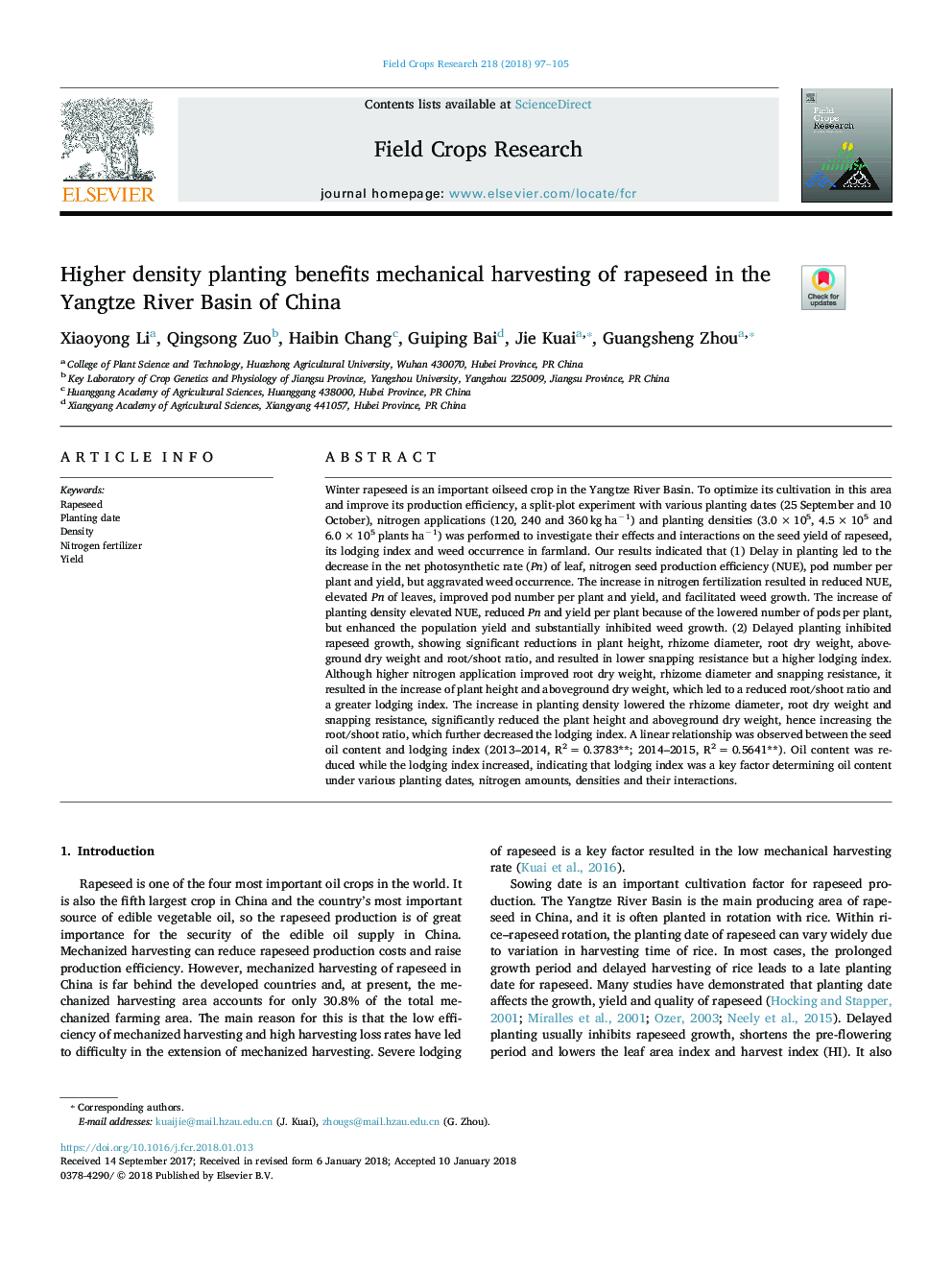| کد مقاله | کد نشریه | سال انتشار | مقاله انگلیسی | نسخه تمام متن |
|---|---|---|---|---|
| 8879357 | 1624645 | 2018 | 9 صفحه PDF | دانلود رایگان |
عنوان انگلیسی مقاله ISI
Higher density planting benefits mechanical harvesting of rapeseed in the Yangtze River Basin of China
ترجمه فارسی عنوان
تراکم چمن کاشت مزایای مکانیکی کلزا را در حوزه رودخانه یانگهی چین به دست می
دانلود مقاله + سفارش ترجمه
دانلود مقاله ISI انگلیسی
رایگان برای ایرانیان
کلمات کلیدی
کلزا، تاریخ کاشت، تراکم، کود نیتروژن، بازده،
موضوعات مرتبط
علوم زیستی و بیوفناوری
علوم کشاورزی و بیولوژیک
علوم زراعت و اصلاح نباتات
چکیده انگلیسی
Winter rapeseed is an important oilseed crop in the Yangtze River Basin. To optimize its cultivation in this area and improve its production efficiency, a split-plot experiment with various planting dates (25 September and 10 October), nitrogen applications (120, 240 and 360â¯kgâ¯haâ1) and planting densities (3.0â¯Ãâ¯105, 4.5â¯Ãâ¯105 and 6.0â¯Ãâ¯105 plants haâ1) was performed to investigate their effects and interactions on the seed yield of rapeseed, its lodging index and weed occurrence in farmland. Our results indicated that (1) Delay in planting led to the decrease in the net photosynthetic rate (Pn) of leaf, nitrogen seed production efficiency (NUE), pod number per plant and yield, but aggravated weed occurrence. The increase in nitrogen fertilization resulted in reduced NUE, elevated Pn of leaves, improved pod number per plant and yield, and facilitated weed growth. The increase of planting density elevated NUE, reduced Pn and yield per plant because of the lowered number of pods per plant, but enhanced the population yield and substantially inhibited weed growth. (2) Delayed planting inhibited rapeseed growth, showing significant reductions in plant height, rhizome diameter, root dry weight, aboveground dry weight and root/shoot ratio, and resulted in lower snapping resistance but a higher lodging index. Although higher nitrogen application improved root dry weight, rhizome diameter and snapping resistance, it resulted in the increase of plant height and aboveground dry weight, which led to a reduced root/shoot ratio and a greater lodging index. The increase in planting density lowered the rhizome diameter, root dry weight and snapping resistance, significantly reduced the plant height and aboveground dry weight, hence increasing the root/shoot ratio, which further decreased the lodging index. A linear relationship was observed between the seed oil content and lodging index (2013-2014, R2â¯=â¯0.3783**; 2014-2015, R2â¯=â¯0.5641**). Oil content was reduced while the lodging index increased, indicating that lodging index was a key factor determining oil content under various planting dates, nitrogen amounts, densities and their interactions.
ناشر
Database: Elsevier - ScienceDirect (ساینس دایرکت)
Journal: Field Crops Research - Volume 218, 1 April 2018, Pages 97-105
Journal: Field Crops Research - Volume 218, 1 April 2018, Pages 97-105
نویسندگان
Xiaoyong Li, Qingsong Zuo, Haibin Chang, Guiping Bai, Jie Kuai, Guangsheng Zhou,
